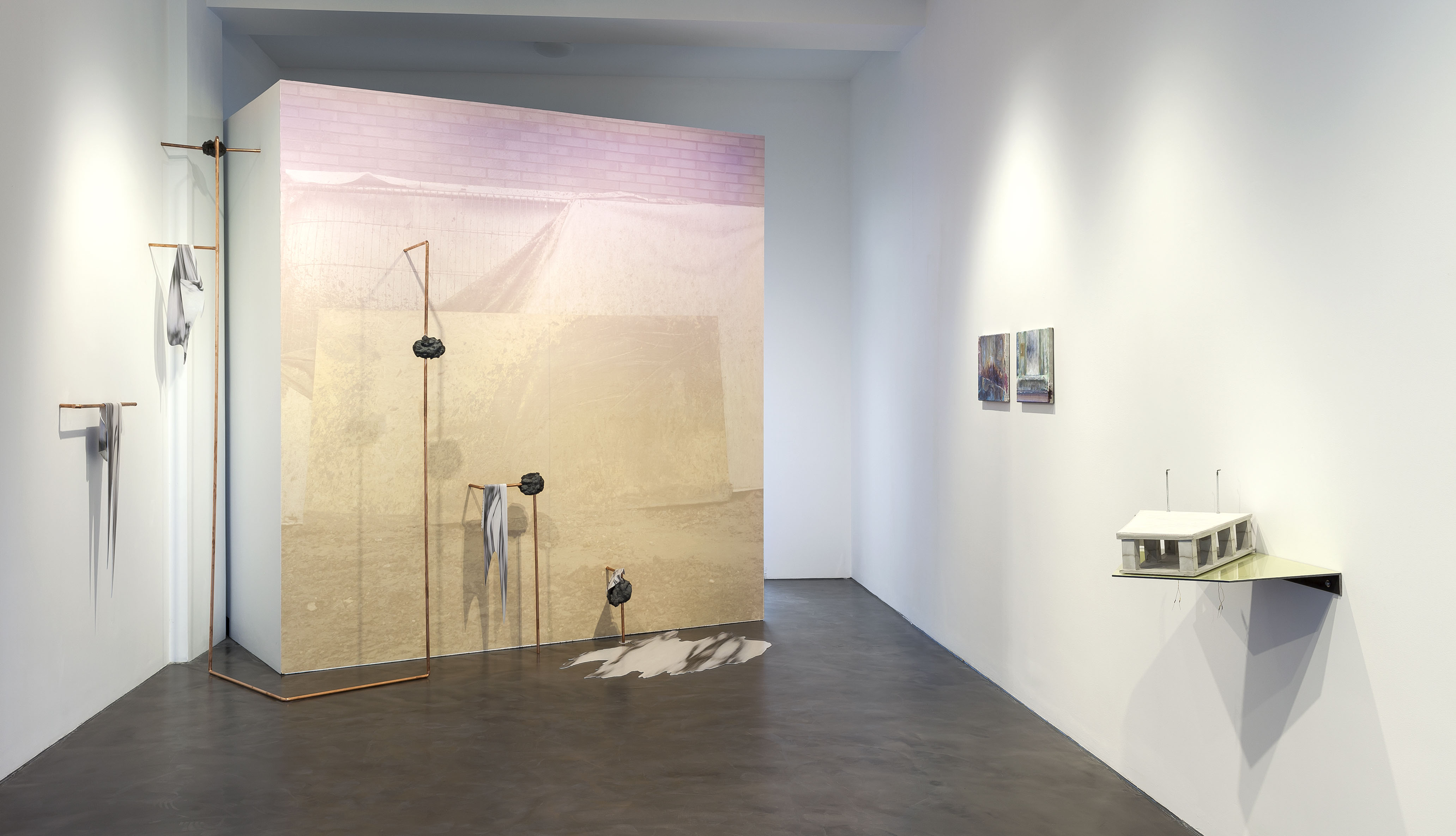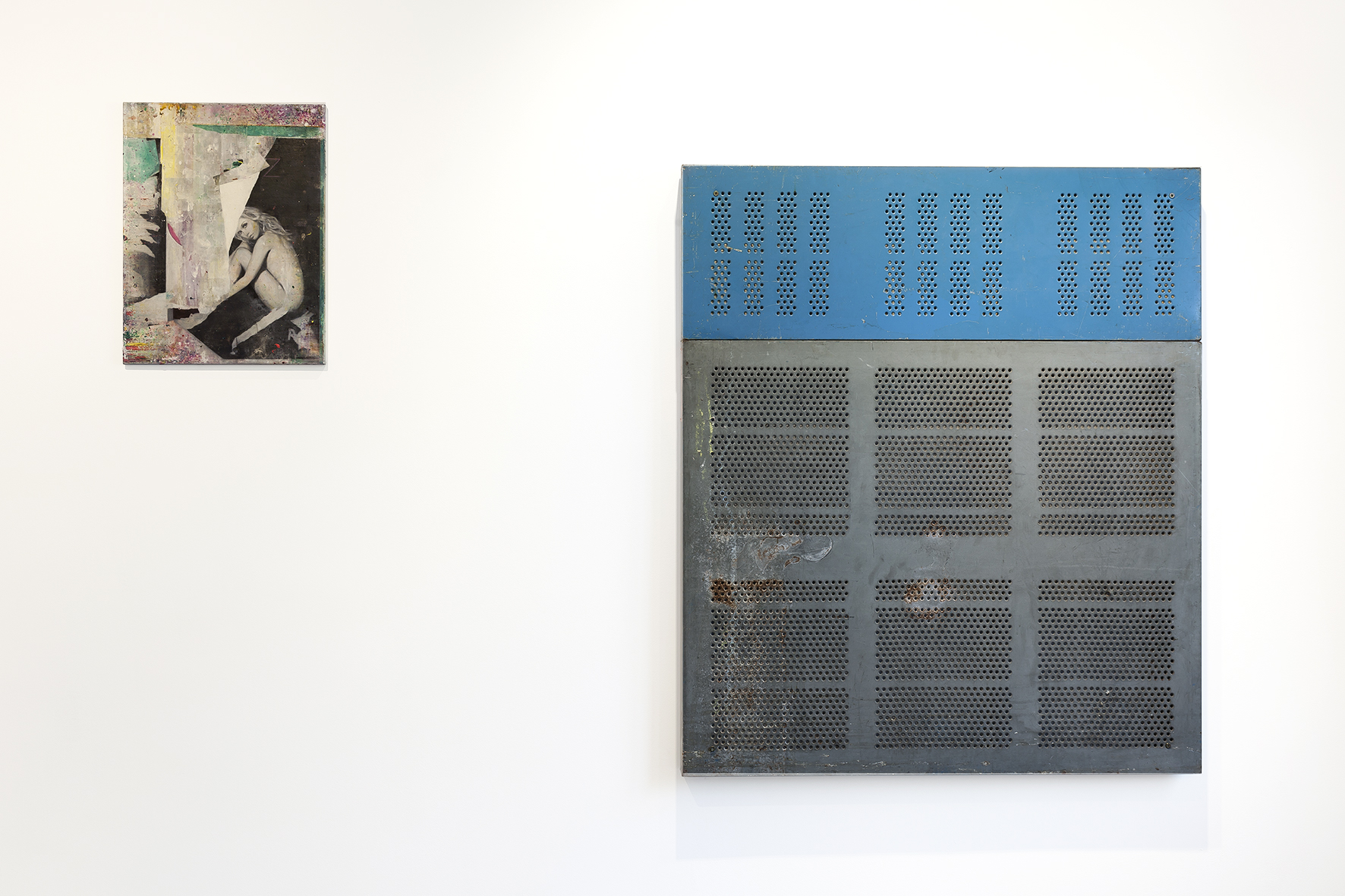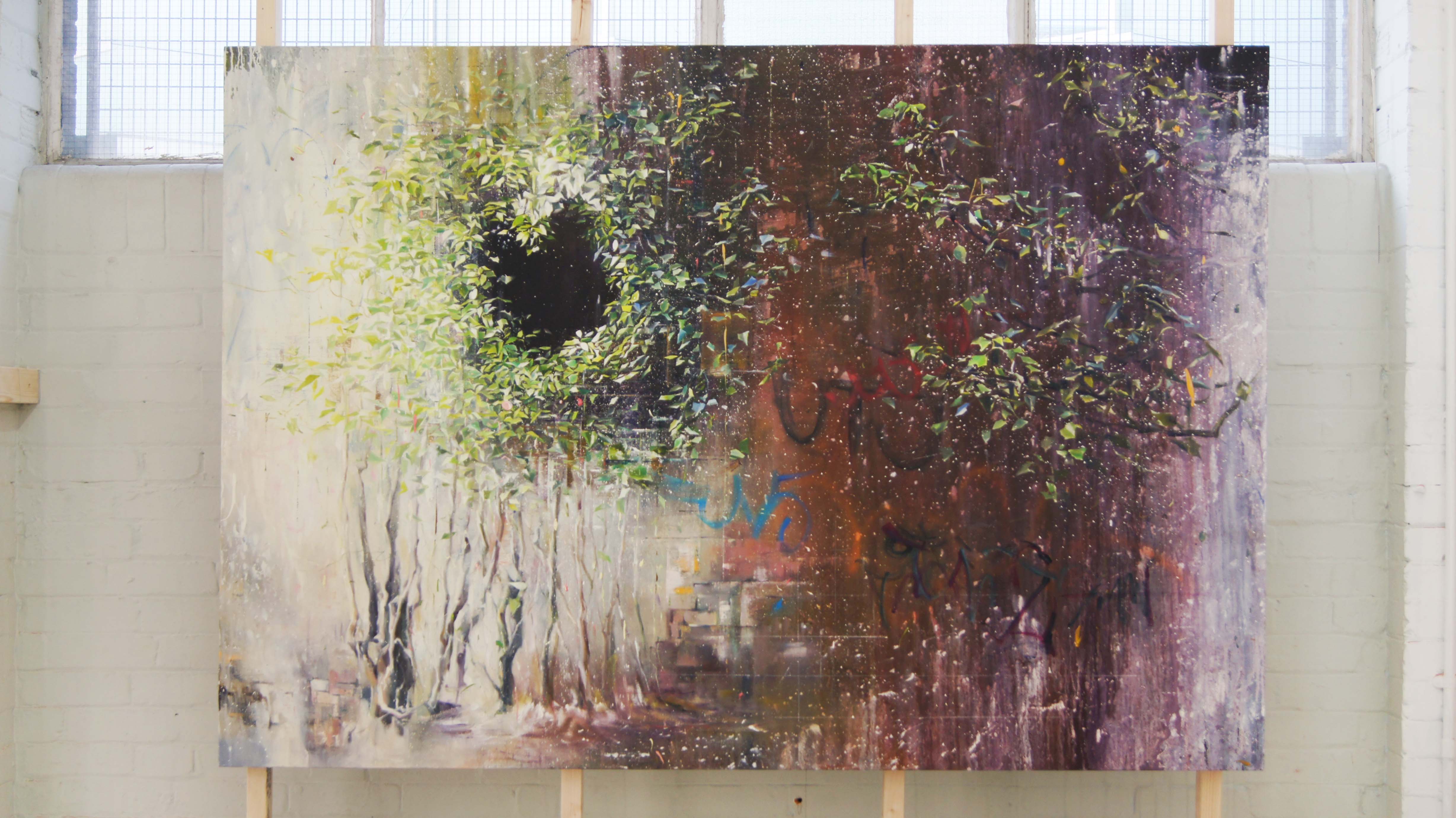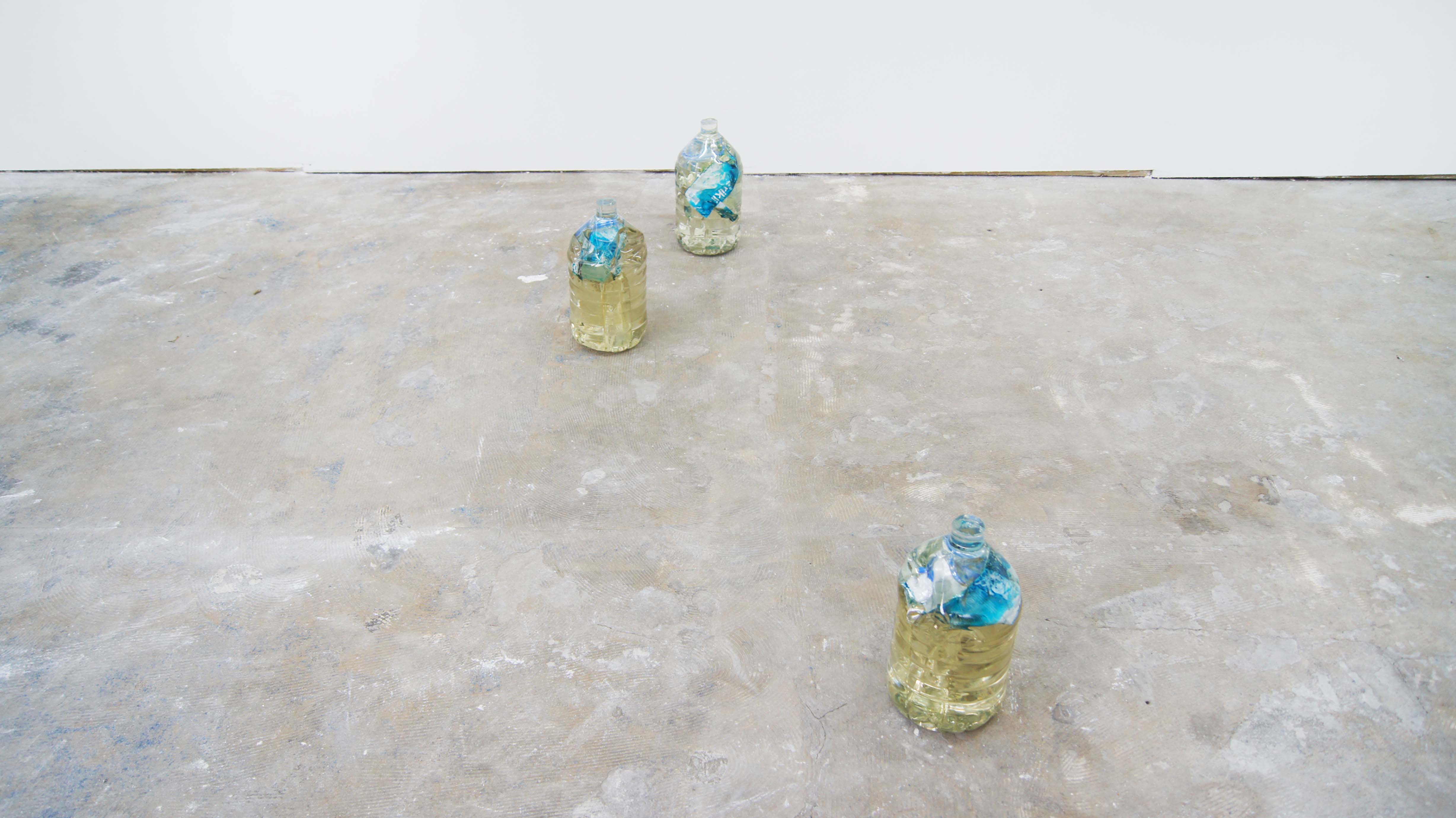
In ‘The Bullet Returns…’ curator Àngels Miralda combines works that celebrate the perverse beauty in urban decay with those that, using humour, bitterly criticise the establishments leading the charge of gentrification. Miralda and the artists who make up the exhibition—Patrick Goddard, Mia Goyette, Felicity Hammond and Hyojun Hyun—answer one question each about the piece they’ve contributed to the Berlin show. Part 2, showing in London until 29 Oct, includes different works by the same artists.
Àngels Miralda
The show at House of Egorn brings together four artists who are all responding in some way to the changing physicality of cities. How did the idea for the show develop? And how do the artists complement one another?
I’ve always been interested in geography and cities. I like to hear about personal experiences because the mega-city can become so anonymous. I chose to work with artists who approach the subject in different ways, use different processes, and offer a diverse output to a single topic of the current urban landscape. It’s all related to the problems and realities of a generation of artists working in contemporary environments and I believe it’s important to show the broad range of reactions this produces.

The Bullet Returns to Where the Shot was Fired, Berlin, installation view (Hyojun Hyun, Venus, oil on canvas, 60x46cm, 2016 & Patrick Goddard, North Sea at Noon, Sytex Security shutters (steel alloy, paint), pigeon shit,120 x 140 cm, 2010)Mia Goyette
Your piece in the exhibition is a tiny concrete sculpture that almost resembles an underground car park, with perfect street lights emerging from one side. It has an unsettling air… is it a replica of a real place?
This concrete sculpture mimics the scale of architectural models, but instead of reflecting an existing space, it uses the rather generic language of a poured foundation. It can be read either as a construction halted halfway, or the skeleton of a building after everything else is gone. Model-making may be a professional tool, but it exists just as much in the realm of the hobbyist, who exercises the unsettling desire to see the world in miniature, as an assortment of interchangeable parts.

Patrick Goddard
Much of your work reacts to urban development—to the ways in which certain groups of people (particularly London’s working class) are marginalised by gentrification. But the work is also very humorous. How do you balance those things? Why is the humour important?
Humour is the sugar coating to my very bitter pills. You pop them in your mouth, they taste good, but if you suck too hard your taste buds will encounter the acrid anger. No balancing needed.
Felicity Hammond
I love that the small rock-like parts of your sculpture in the show are stolen ballasts from the sites of luxury developments in London. How did you come to decide that the real materials from these places needed to be part of the work?
I felt that using concrete alone wasn’t enough – the idea of this work is to fuse the elements of local sites with the rendered material that surrounds it. For me, the use of local ballast in my concrete mix talks of the physical unearthing of the landscape. A lot of buildings use concrete in their construction, but this work situates the material as a relic which never fulfilled its function.

Hyojun Hyun, St. Peters Window, 135 x 194 cm, oil on canvas, 2015Hyojun HyunThough semi-abstract, your portraits of the walls, graffiti, train stations, and bridges of Berlin really evoke the city’s industrial charm. What is it about Berlin draws you to it?
I can see various textures, interesting compositions and colours on the street. It is great inspiration to explore different painterly languages. It just happens in my daily life. I never tried to research or study here in Berlin. I like the idea of the playful and spontaneous. When I come back to my studio, I try to capture this fleeting moment of excitement.
Part 2 of ‘The Bullet Returns To Where The Shot Was Fired’ takes place in London at 13-19 Herald Street, 7-29 October 2016





